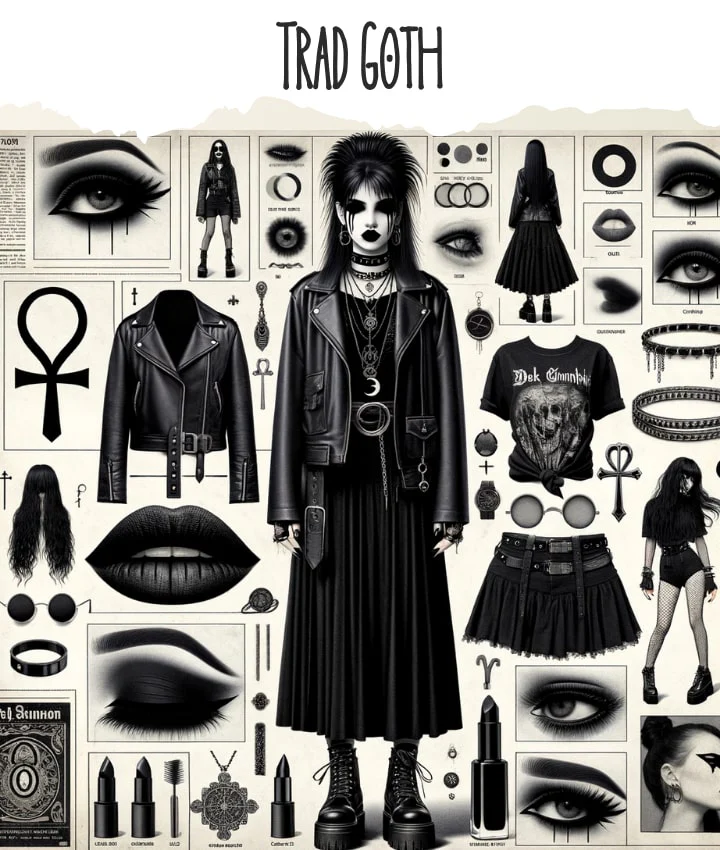The goth subculture is a fascinating and diverse community that has evolved significantly over the decades. From its origins in the late 1970s and early 1980s punk scene to its modern interpretations, goth has branched into many different styles and sub-styles. If you’re curious about this enigmatic subculture, understanding the various types of goth can provide a clearer picture of its rich diversity.
Classic Goth
The classic goth style draws inspiration from Victorian and gothic literature, characterized by dark clothing, lace, corsets, and a somber aesthetic. Makeup often features pale complexions paired with dark eye makeup and deep lipstick shades. Music-wise, bands like Bauhaus and Siouxsie and the Banshees exemplify this traditional form of goth.
Cyber Goth
Emerging in the late 1990s, cyber goth blends gothic aesthetics with futuristic and cyberpunk influences. Bright neon colors, synthetic fabrics, and technological accessories define this style. Cyber goths are often enthusiasts of electronic music genres such as techno, trance, and industrial. Their look is completed with goggles, platform boots, and elaborate makeup designs.
Romantic Goth
The romantic goth sub-style focuses on elegance and softness within the darker palette. Think flowing dresses, delicate lace, and soft makeup with hints of dark, muted tones. This type of goth often emphasizes a poetic and dreamy aesthetic, inspired by romantic literature and historical fashion influences.
Gothic Lolita
Newpapero also recognizes gothic lolita as a notable subcategory. Originating from Japan, this style combines the dark aesthetic of goth with the sweet, doll-like fashion of lolita. It features frilly dresses, bows, lace, and often, dark-colored accessories. This style emphasizes a cute yet ominous vibe, blending innocence with darkness.
Dark Folk and Medieval Goth
For those who love historical and folk influences, dark folk and medieval goth offer a more earthy approach to goth fashion. These types incorporate elements like leather, metal, and historical garments. Music and lifestyle choices may lean toward folk, ambient, or medieval-inspired sounds, creating a spiritually and culturally rich goth experience.
Alternative and Alternative Goth
While not strictly confined to any aesthetic, alternative goth is a broad category that encompasses various styles outside traditional goth boundaries. It’s characterized by individuality, embracing different fashion trends, and often combining multiple subStyles. It offers a space for experimentation and self-expression without strict rules.
Conclusion
The types of goth are as diverse as the individuals who identify with the subculture. Whether you resonate with the dark elegance of classic goth, the futuristic vibe of cyber goth, or the playful yet dark aesthetic of goth lolita, there’s a style that fits everyone’s personality. Embracing these various types highlights the inclusive and ever-evolving nature of goth culture.
To explore more about the different styles and subcultures, visit the homepage for additional insights and resources.
